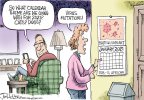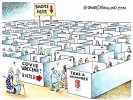Dozens more cases of highly contagious COVID-19 variant identified in San Diego County
https://www.sandiegouniontribune.com/news/health/story/2021-01-05/dozens-more-cases-of-contagious-covid-19-variant-identified-in-san-diego-county
32 COVID-19 Variant Cases Identified in San Diego County
https://www.countynewscenter.com/32-covid-19-variant-cases-identified-in-san-diego-county/
Twenty-four confirmed and four probable cases of the more contagious strain of SARS-CoV2, the virus that causes COVID-19, have been identified in San Diego County, the Health and Human Services Agency announced today.
The new cases of the variant that emerged in the United Kingdom, known as B.1.1.7, bring the region’s total to 32. Sixteen are men and 16 are women. The new total includes 28 cases confirmed by whole genome sequencing and four probable cases that are directly linked to the confirmed cases and have positive diagnostic nucleic acid tests, but are not yet sequenced.
Two dozen new variant cases were confirmed on Jan. 4 from specimens collected from Dec. 27 through Dec. 31 and tested at the San Diego-based laboratory Helix and its partner Illumina under a Centers for Disease Control and Prevention surveillance project.
Viral mutations may cause another ‘very, very bad’ COVID-19 wave, scientists warn
https://www.sciencemag.org/news/2021/01/viral-mutations-may-cause-another-very-very-bad-covid-19-wave-scientists-warn
For COVID-19 researchers, the new year brings a strong sense of déjà vu. As in early 2020, the world is anxiously watching a virus spread in one country and trying to parse the risk for everyone else. This time it is not a completely new threat, but a rapidly spreading variant of SARS-CoV-2. In southeastern England, where the B.1.1.7 variant first caught scientists’ attention last month, it has quickly replaced other variants, and it may be the harbinger of a new, particularly perilous phase of the pandemic. Mutant coronavirus in the United Kingdom sets off alarms, but its importance remains unclear
“One concern is that B.1.1.7 will now become the dominant global variant with its higher transmission and it will drive another very, very bad wave,” says Jeremy Farrar, an infectious disease expert who heads the Wellcome Trust. Whereas the pandemic’s trajectory in 2020 was fairly predictable, “I think we’re going into an unpredictable phase now,” as a result the virus’ evolution, Farrar says.
The concern has led some countries to speed up vaccine authorizations or discuss dosing regimens that may protect more people rapidly. But as the new variant surfaces in multiple countries, many scientists are calling for governments to strengthen existing control measures as well. ...
The lack of evidence—so far—that the new variant makes people sicker is little consolation. Increased transmissibility of a virus is much more treacherous than increased pathogenicity because its effects grow exponentially, Kucharski says. “If you have something that kills 1% of people but a huge number of people get it, that’s going to result in more deaths than something that a small number of people get but it kills 2% of them.”
We Will Need to Update COVID Vaccines, Expert Says
https://www.medscape.com/viewarticle/943251
Eric Topol, MD Gary & Mary West Endowed Chair of Innovative Medicine, Scripps Research. Executive VP, Scripps Research. Professor, Molecular Medicine, Scripps Research. Director & Founder, Scripps Research Translational Institute. Department of Molecular Medicine.
Eric J. Topol, MD: Hello. This is Eric Topol for Medscape One-on-One. I'm really delighted to have the chance to have a conversation with Professor Eddie Holmes, one of the world's great evolutionary virologists, from the University of Sydney. Welcome, Eddie.
Edward C. Holmes, FRS, FAA: Thank you. It's a real pleasure to be here.
‘I Will Get Up’: A Hard New Year Greets a World in Waiting
https://www.nytimes.com/2021/01/06/world/europe/coronavirus-new-year-vaccine.html
People around the world counted down to the end of 2020 with relish, pegging their hopes on the idea that the New Year would bring vaccines and something that felt like normalcy. But the coronavirus keeps no calendar. It has kept doing what it does: spreading, killing, sowing grief.
The bad news rolled in during the first days of 2021, including about a more-easily spread variant of the coronavirus that has sent Britain into a desperate lockdown and put the world on notice that tougher times could be ahead. More than ever, hope is riding on vaccine rollouts that have been fumbled and slowed around the world.
But it’s not just the realization that the vaccines aren’t an instant panacea that has been such a gut punch. It’s that life is still upended everywhere.
Customs have been disrupted and major life moments skipped. Political polarization has festered and made an all-or-nothing ideological banner out of something as simple as a surgical mask. Modern presumptions about living in a post-plague age have been shattered. Weekdays and weekends, vacation days and sick days, are distinctions without a difference. The randomness of death that once seemed relegated to war zones is now everywhere.
The New Year doesn’t look, or feel, so different.
https://www.sandiegouniontribune.com/news/health/story/2021-01-05/dozens-more-cases-of-contagious-covid-19-variant-identified-in-san-diego-county
32 COVID-19 Variant Cases Identified in San Diego County
https://www.countynewscenter.com/32-covid-19-variant-cases-identified-in-san-diego-county/
Twenty-four confirmed and four probable cases of the more contagious strain of SARS-CoV2, the virus that causes COVID-19, have been identified in San Diego County, the Health and Human Services Agency announced today.
The new cases of the variant that emerged in the United Kingdom, known as B.1.1.7, bring the region’s total to 32. Sixteen are men and 16 are women. The new total includes 28 cases confirmed by whole genome sequencing and four probable cases that are directly linked to the confirmed cases and have positive diagnostic nucleic acid tests, but are not yet sequenced.
Two dozen new variant cases were confirmed on Jan. 4 from specimens collected from Dec. 27 through Dec. 31 and tested at the San Diego-based laboratory Helix and its partner Illumina under a Centers for Disease Control and Prevention surveillance project.
Viral mutations may cause another ‘very, very bad’ COVID-19 wave, scientists warn
https://www.sciencemag.org/news/2021/01/viral-mutations-may-cause-another-very-very-bad-covid-19-wave-scientists-warn
For COVID-19 researchers, the new year brings a strong sense of déjà vu. As in early 2020, the world is anxiously watching a virus spread in one country and trying to parse the risk for everyone else. This time it is not a completely new threat, but a rapidly spreading variant of SARS-CoV-2. In southeastern England, where the B.1.1.7 variant first caught scientists’ attention last month, it has quickly replaced other variants, and it may be the harbinger of a new, particularly perilous phase of the pandemic. Mutant coronavirus in the United Kingdom sets off alarms, but its importance remains unclear
“One concern is that B.1.1.7 will now become the dominant global variant with its higher transmission and it will drive another very, very bad wave,” says Jeremy Farrar, an infectious disease expert who heads the Wellcome Trust. Whereas the pandemic’s trajectory in 2020 was fairly predictable, “I think we’re going into an unpredictable phase now,” as a result the virus’ evolution, Farrar says.
The concern has led some countries to speed up vaccine authorizations or discuss dosing regimens that may protect more people rapidly. But as the new variant surfaces in multiple countries, many scientists are calling for governments to strengthen existing control measures as well. ...
The lack of evidence—so far—that the new variant makes people sicker is little consolation. Increased transmissibility of a virus is much more treacherous than increased pathogenicity because its effects grow exponentially, Kucharski says. “If you have something that kills 1% of people but a huge number of people get it, that’s going to result in more deaths than something that a small number of people get but it kills 2% of them.”
We Will Need to Update COVID Vaccines, Expert Says
https://www.medscape.com/viewarticle/943251
Eric Topol, MD Gary & Mary West Endowed Chair of Innovative Medicine, Scripps Research. Executive VP, Scripps Research. Professor, Molecular Medicine, Scripps Research. Director & Founder, Scripps Research Translational Institute. Department of Molecular Medicine.
Eric J. Topol, MD: Hello. This is Eric Topol for Medscape One-on-One. I'm really delighted to have the chance to have a conversation with Professor Eddie Holmes, one of the world's great evolutionary virologists, from the University of Sydney. Welcome, Eddie.
Edward C. Holmes, FRS, FAA: Thank you. It's a real pleasure to be here.
‘I Will Get Up’: A Hard New Year Greets a World in Waiting
https://www.nytimes.com/2021/01/06/world/europe/coronavirus-new-year-vaccine.html
People around the world counted down to the end of 2020 with relish, pegging their hopes on the idea that the New Year would bring vaccines and something that felt like normalcy. But the coronavirus keeps no calendar. It has kept doing what it does: spreading, killing, sowing grief.
The bad news rolled in during the first days of 2021, including about a more-easily spread variant of the coronavirus that has sent Britain into a desperate lockdown and put the world on notice that tougher times could be ahead. More than ever, hope is riding on vaccine rollouts that have been fumbled and slowed around the world.
But it’s not just the realization that the vaccines aren’t an instant panacea that has been such a gut punch. It’s that life is still upended everywhere.
Customs have been disrupted and major life moments skipped. Political polarization has festered and made an all-or-nothing ideological banner out of something as simple as a surgical mask. Modern presumptions about living in a post-plague age have been shattered. Weekdays and weekends, vacation days and sick days, are distinctions without a difference. The randomness of death that once seemed relegated to war zones is now everywhere.
The New Year doesn’t look, or feel, so different.





